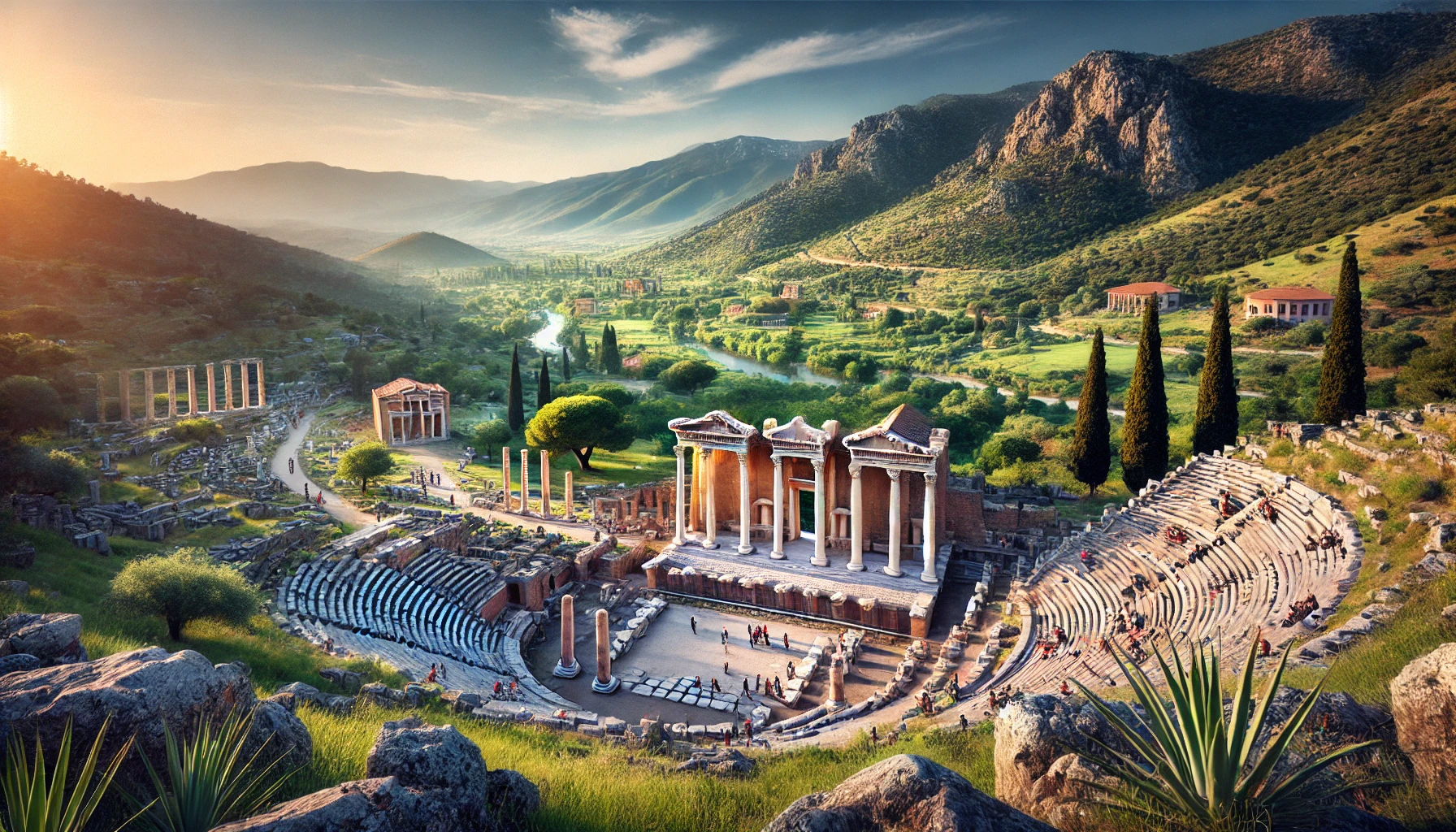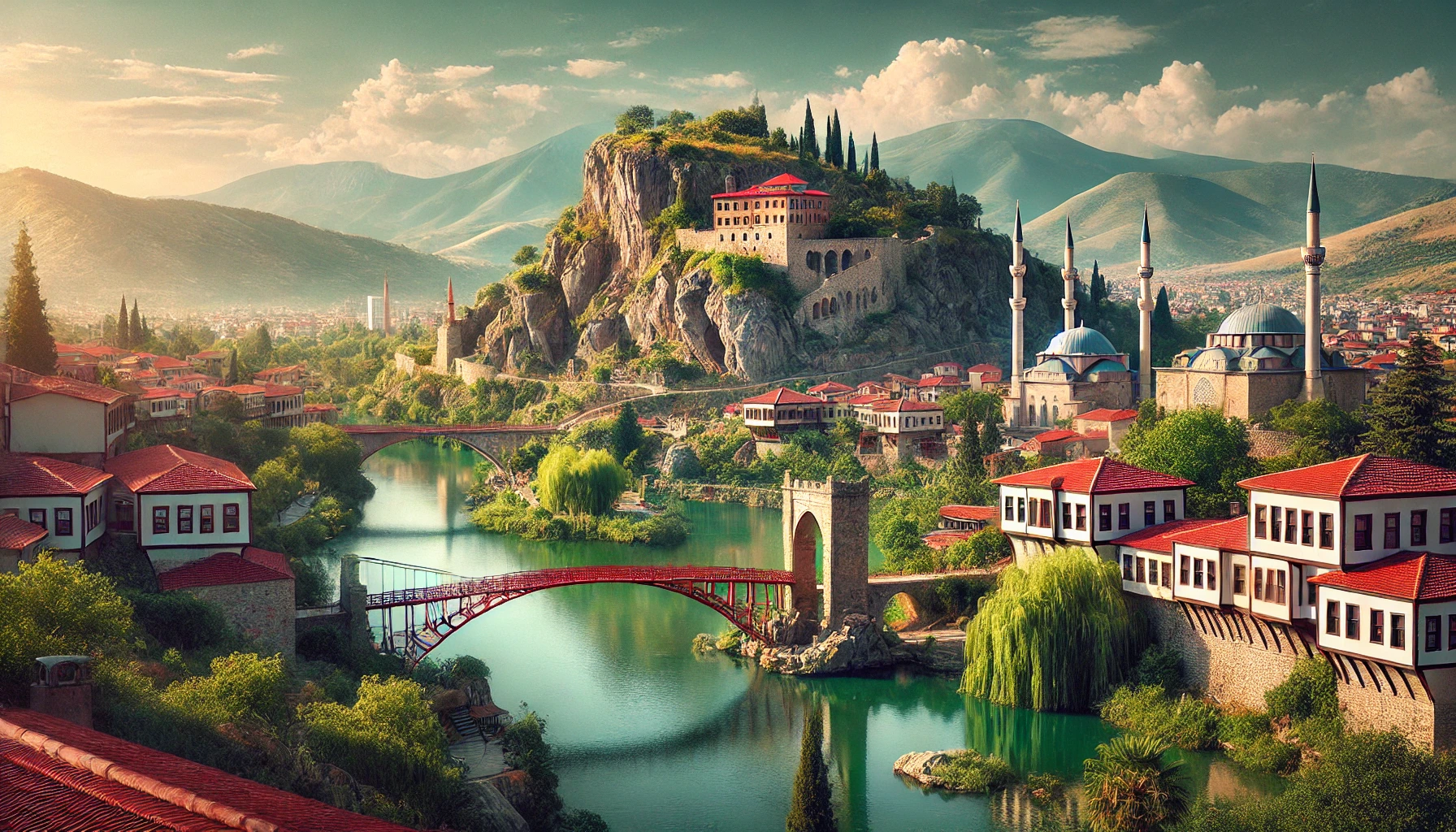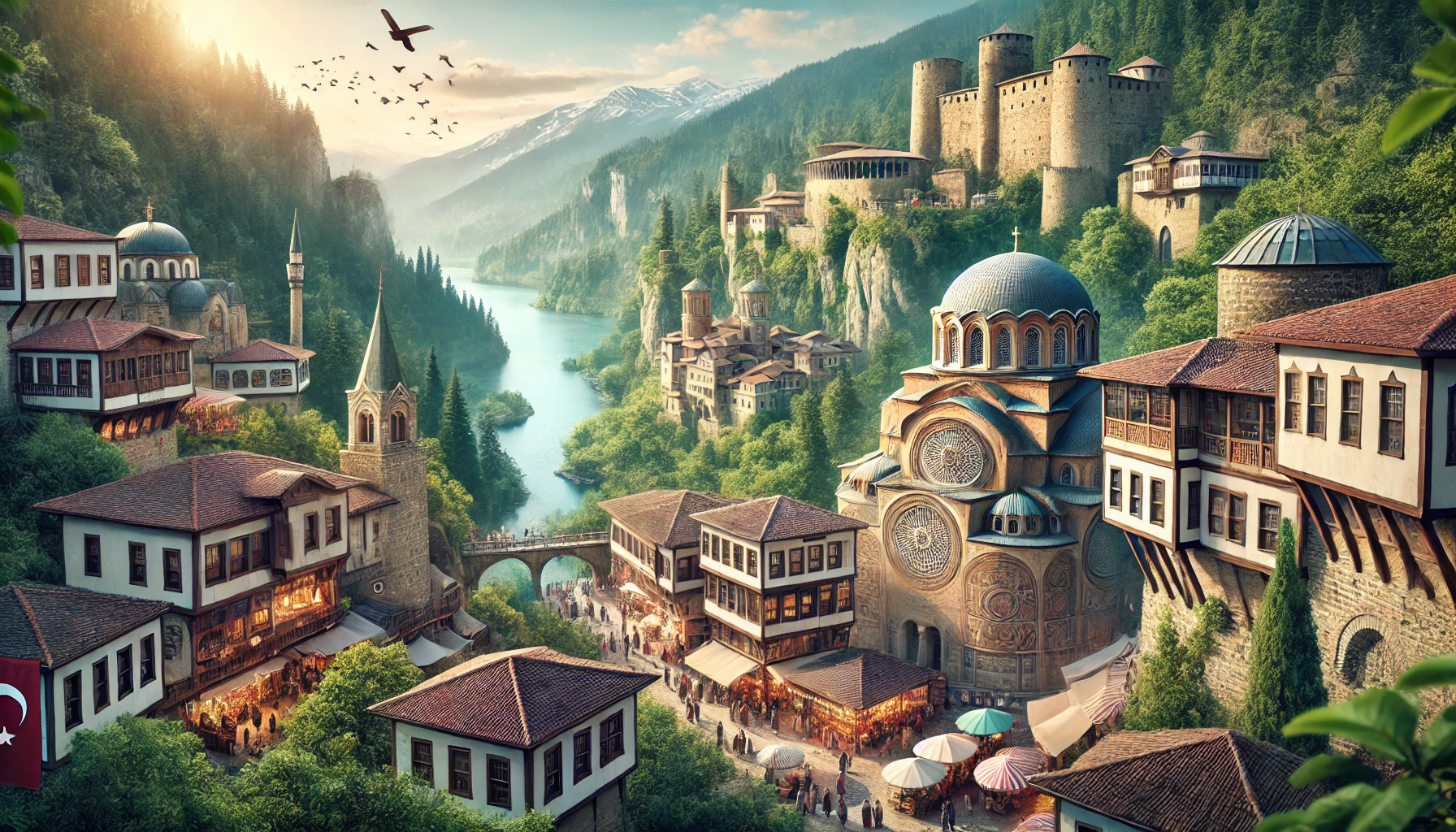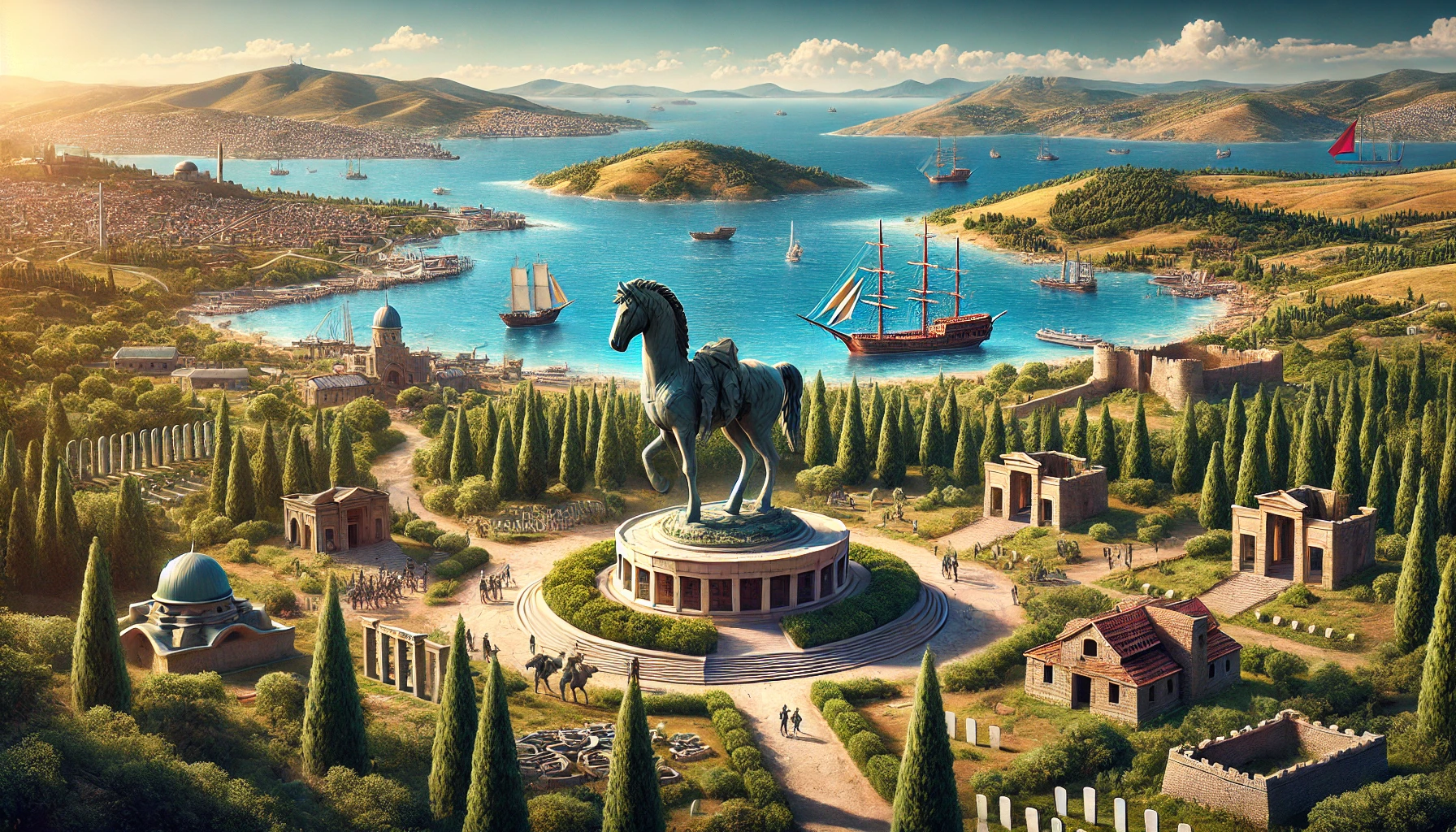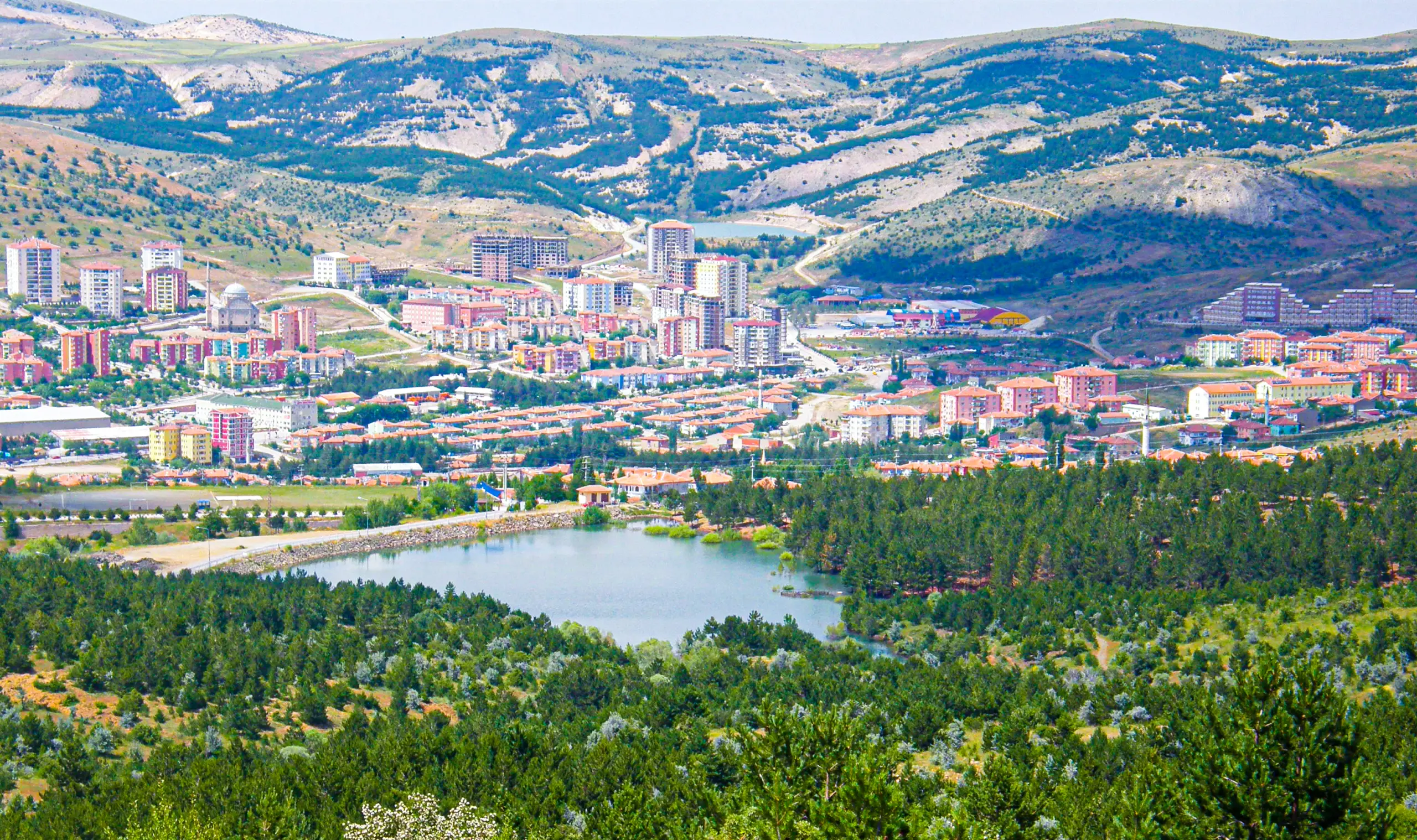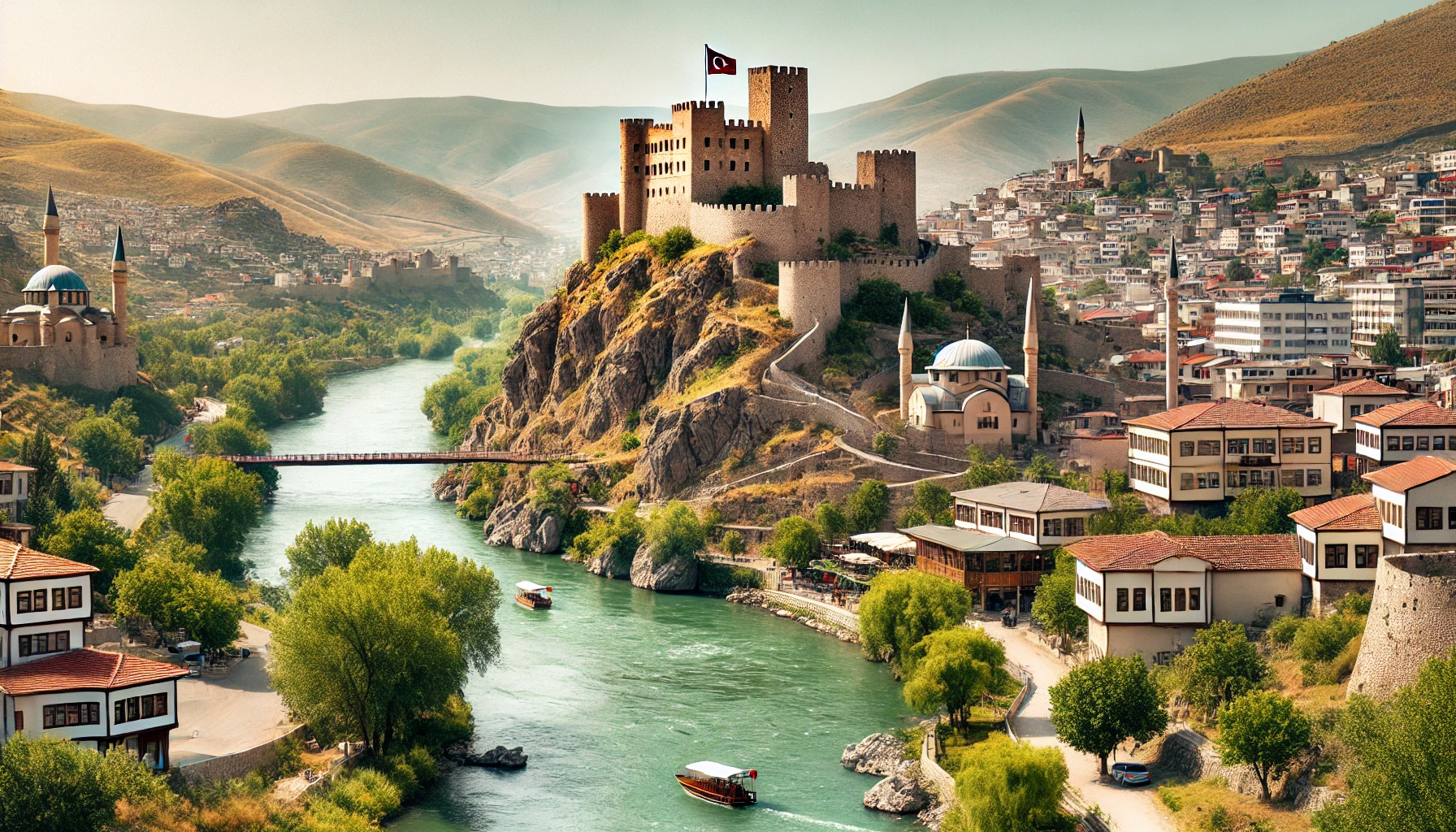Discovering Priene: The Ancient Ionian Gem
Introduction to Priene
Nestled within the borders of Aydin province in Turkey, Priene is an ancient Ionian city that offers a fascinating glimpse into the classical world. With a history dating back to 2000 BC, Priene stands as a testament to ancient city planning and architectural prowess. This well-preserved city, constructed using the “grid system,” is home to significant historical structures such as the Temples of Athena and Zeus Olympus, the theater, and the agora. For travel enthusiasts and history buffs alike, Priene promises an enriching and memorable experience.
The Historical Significance of Priene
Priene’s rich history is evident in its ruins, which reflect the city’s importance during the Ionian era. Founded around 1000 BC by Ionian Greeks, Priene was a prominent city known for its strategic location and sophisticated urban planning.
The Grid System
One of Priene’s most notable features is its use of the grid system in city planning. This innovative approach, attributed to the architect Hippodamus, involved arranging streets in a precise, rectangular pattern. This method not only facilitated efficient movement within the city but also demonstrated advanced knowledge of urban development.
A Center of Religion and Culture
Priene was a vital religious and cultural center, with several temples and public buildings that played significant roles in the city’s life. The Temples of Athena and Zeus Olympus, in particular, highlight the city’s religious significance, drawing worshippers from far and wide.
Major Attractions in Priene
The Temple of Athena
The Temple of Athena is arguably Priene’s most iconic landmark. Dedicated to Athena, the goddess of wisdom and war, this temple was designed by the famous architect Pytheos. The temple’s classical Ionic columns and well-preserved ruins offer a glimpse into the grandeur of ancient Greek architecture. Visitors can marvel at the intricate details and imagine the rituals that once took place within its walls.
The Temple of Zeus Olympus
Another significant religious site in Priene is the Temple of Zeus Olympus. Although less well-preserved than the Temple of Athena, the ruins of this temple still convey its historical importance. The temple was a center for worship and religious gatherings, underscoring Zeus’s role as the king of the gods in ancient Greek mythology.
The Theater
Priene’s theater is a magnificent example of ancient Greek engineering and design. Carved into the hillside, the theater could accommodate up to 6,500 spectators. Its well-preserved structure, including the stage and seating areas, provides a tangible connection to the cultural and social life of ancient Priene. Today, the theater continues to impress visitors with its acoustics and architectural beauty.
The Agora
The Agora was the heart of public life in Priene. This open space served as a marketplace and a venue for political and social gatherings. Surrounded by stoas and public buildings, the Agora was a bustling hub of activity. Exploring the remains of the Agora, visitors can get a sense of the daily life and commerce that once thrived in this ancient city.
Exploring the Ruins of Priene
Walking Through Ancient Streets
One of the most engaging ways to explore Priene is by walking through its ancient streets. The well-preserved grid layout allows visitors to navigate the city much as its ancient inhabitants did. Strolling through these streets, visitors can discover lesser-known structures, residential areas, and public spaces that paint a complete picture of life in Priene.
Architectural Marvels
Priene is a treasure trove of architectural marvels. Beyond the major temples and theater, the city is dotted with various other structures, including private homes, public baths, and administrative buildings. These ruins showcase the advanced architectural techniques and urban planning strategies of the ancient Greeks.
The Natural Beauty Surrounding Priene
Scenic Landscapes
Priene is situated on the slopes of Mount Mycale, offering stunning views of the surrounding landscape. The natural beauty of the area complements the historical significance of the ruins, creating a serene and picturesque setting. Visitors can enjoy panoramic views of the Aegean Sea and the fertile plains below, making Priene a perfect destination for photography and nature enthusiasts.
Hiking and Nature Walks
The area around Priene offers excellent opportunities for hiking and nature walks. Several trails lead through the hills and forests, providing breathtaking views and a chance to explore the region’s natural beauty. These outdoor activities are a great way to complement the historical exploration of Priene, offering a well-rounded travel experience.
Activities and Excursions in Priene
Guided Historical Tours
For those interested in delving deeper into the history of Priene, guided tours are available. Knowledgeable guides provide detailed information about the city’s significance, architecture, and cultural heritage. These tours offer a comprehensive and engaging way to explore Priene, making history come alive for visitors.
Educational Workshops
Educational workshops and programs are also offered at Priene, catering to both adults and children. These workshops cover a range of topics, from ancient pottery-making techniques to the study of Greek inscriptions. Participating in these activities provides a hands-on learning experience and a deeper connection to the ancient world.
The Cultural Experience
Local Cuisine
A visit to Priene is incomplete without sampling the local cuisine. The region is known for its delicious Mediterranean dishes, featuring fresh seafood, olive oil, and a variety of herbs and spices. Local restaurants and cafes offer a range of traditional Turkish meals, providing a culinary experience that complements the historical exploration of Priene.
Festivals and Events
Priene and the surrounding area host various cultural festivals and events throughout the year. These celebrations showcase the local traditions, music, dance, and cuisine, offering visitors a chance to immerse themselves in the vibrant culture of the region. Participating in these festivals provides a unique insight into the community life and heritage of Priene.
Practical Information for Visitors
Best Time to Visit
The best time to visit Priene is during the spring (April to June) and autumn (September to November) months when the weather is mild and pleasant. These seasons offer ideal conditions for exploring the ancient ruins and enjoying outdoor activities. The summer months (July to August) can be quite hot, but the historical site provides ample shade for visitors.
Getting There
Priene is accessible from the town of Söke, which can be reached by car or bus from major cities in Turkey. From Söke, visitors can take a taxi or a local bus to Priene. The scenic drive through the countryside offers beautiful views of the region’s landscape.
Accommodation
There are various accommodation options available near Priene, ranging from luxury hotels to budget-friendly guesthouses. Many of these accommodations offer easy access to the archaeological site and the surrounding attractions. Whether you prefer a comfortable hotel or a cozy guesthouse, you’ll find a place that suits your needs and preferences.
Priene, with its rich history, cultural significance, and natural beauty, is a must-visit destination for travel enthusiasts. From exploring ancient ruins and temples to enjoying the scenic landscape and local cuisine, Priene offers a unique and enriching travel experience. Whether you’re a history buff, a nature lover, or someone looking to immerse yourself in the culture of ancient Ionia, Priene promises an unforgettable journey through time and tradition.
Latest Update: Jul 21, 2024
Your Content Goes Here
TAGS: ancient city Priene, Ionian city Priene, Priene, Priene agora, Priene Aydin, Priene theater, Priene Turkey, Temple of Athena Priene, Temple of Zeus Olympus Priene, travel Priene
A brief summary of the key points in this article.

